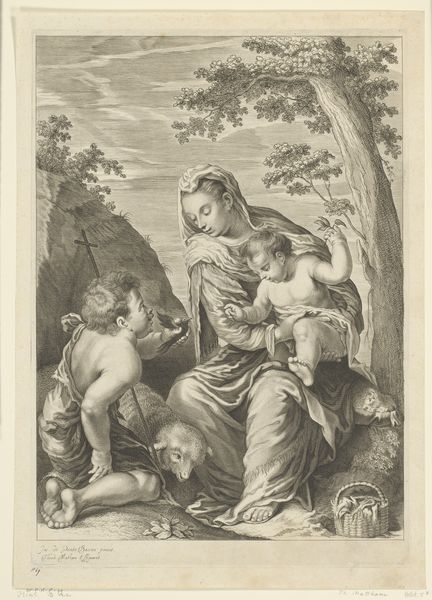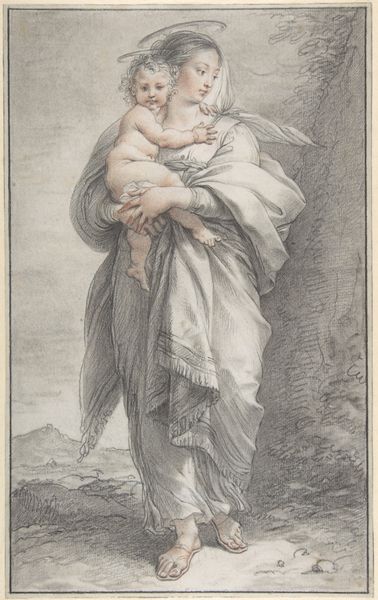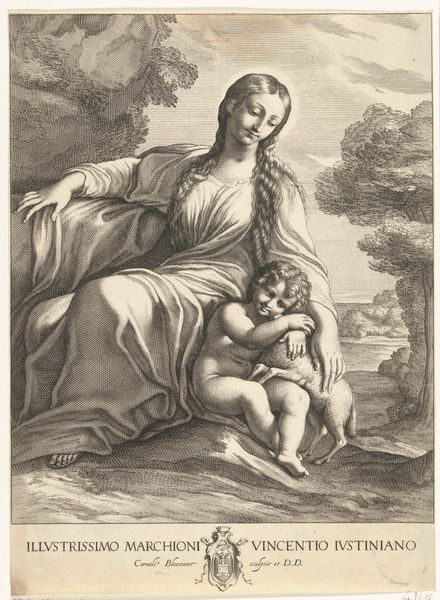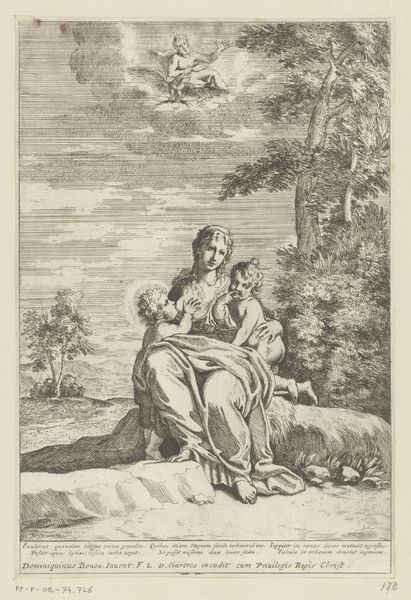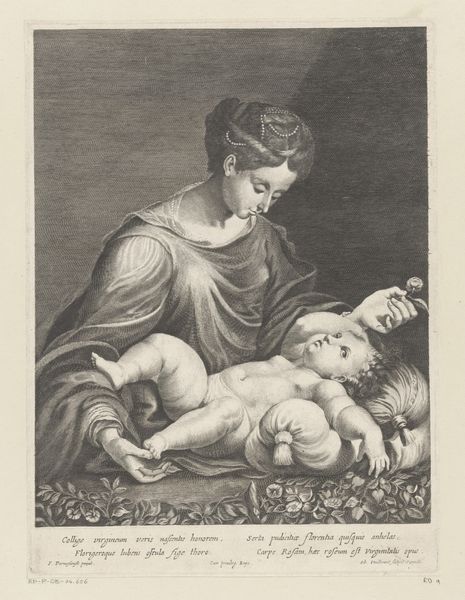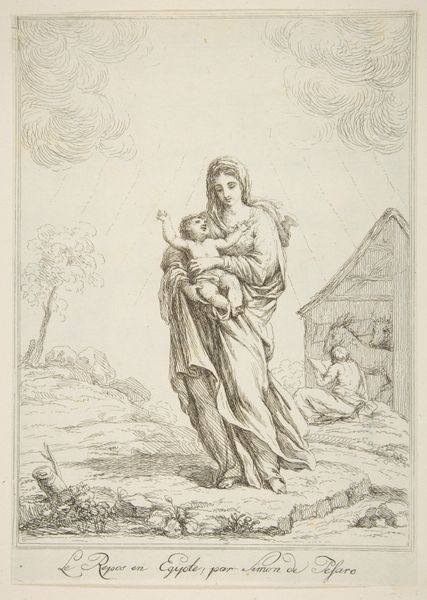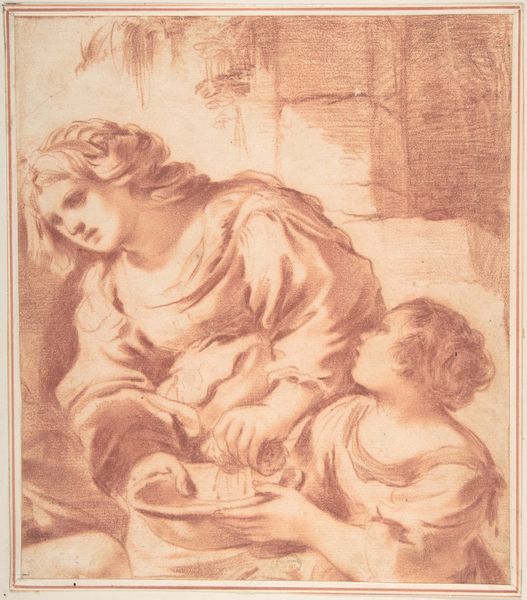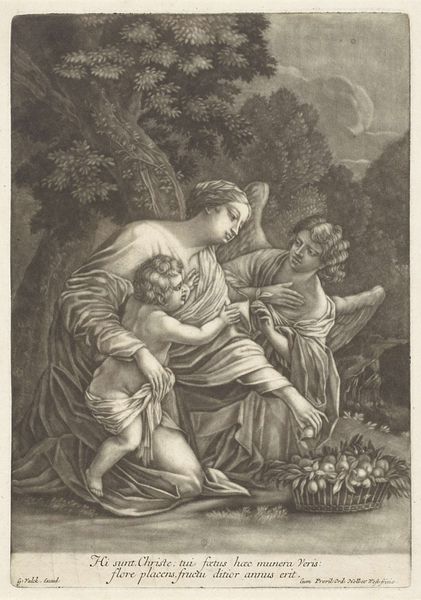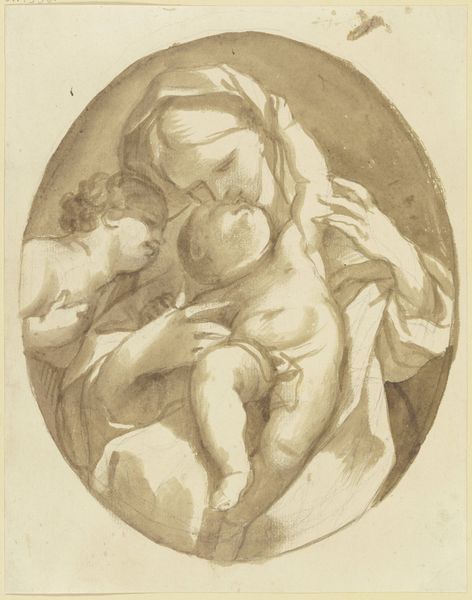
print, engraving
portrait
baroque
figuration
history-painting
engraving
Dimensions: plate: 13.02 × 11.27 cm (5 1/8 × 4 7/16 in.) sheet: 29.53 × 21.91 cm (11 5/8 × 8 5/8 in.)
Copyright: National Gallery of Art: CC0 1.0
Curator: Here we have "The Virgin and Child," an engraving crafted around the mid-18th century by Giovanni Bottani. The print offers a touching depiction of the Madonna and infant Jesus. Editor: My first impression is the overwhelming sense of tenderness, a quiet moment. The lines are so precise; you can almost feel the softness of their embrace despite the starkness of the engraving. Look at the details in the drapery, how laboriously the engraver worked this. Curator: Indeed. Bottani was working within a well-established tradition of depicting the Virgin and Child, and we can certainly see the influence of Baroque ideals here in the flowing lines and dramatic composition. It was a common theme, reproduced and circulated widely, so understanding the socio-political purpose behind the images becomes extremely important to understanding it. Editor: Agreed, that mass production element of this devotional image is fascinating. The lines aren't just lines, but the result of material processes, ink on paper through a carefully etched metal plate. Look at the lines – the variety in their thickness and density, see the subtle shadows. We must consider who would've been creating these prints and to whom these objects were being circulated and by whom. The networks involved... Curator: Absolutely. It speaks volumes about the democratization of religious imagery during that period, allowing individuals from various social strata to access and contemplate sacred subjects in their own homes, as the market for this material rapidly increased in Europe during that period. Editor: It is incredible when considering the hours someone put into it. This wasn't just art. It was a craft, labor, faith made visible. It offered devotional accessibility, both practical and affordable for so many. Curator: Looking closer at the Virgin’s face and Jesus halo it adds another dimension to its public appeal. Bottani creates this compelling image steeped in tradition but ready for circulation, shaping how individuals perceive their place in relation to this iconic biblical relationship. Editor: Considering its origins, tracing these lines tells a tale of faith transformed through manual skill. It shifts perspective to acknowledge the craftspeople and processes inherent in creating what became popular visual and spiritual touchstones. Curator: Ultimately, this piece exemplifies the powerful role of imagery in disseminating faith and influencing societal values during the 18th century. Editor: Yes, it allows us to reflect not only on the art but also on those who crafted it by hand and how its very creation connected the public to faith in more hands-on ways.
Comments
No comments
Be the first to comment and join the conversation on the ultimate creative platform.
